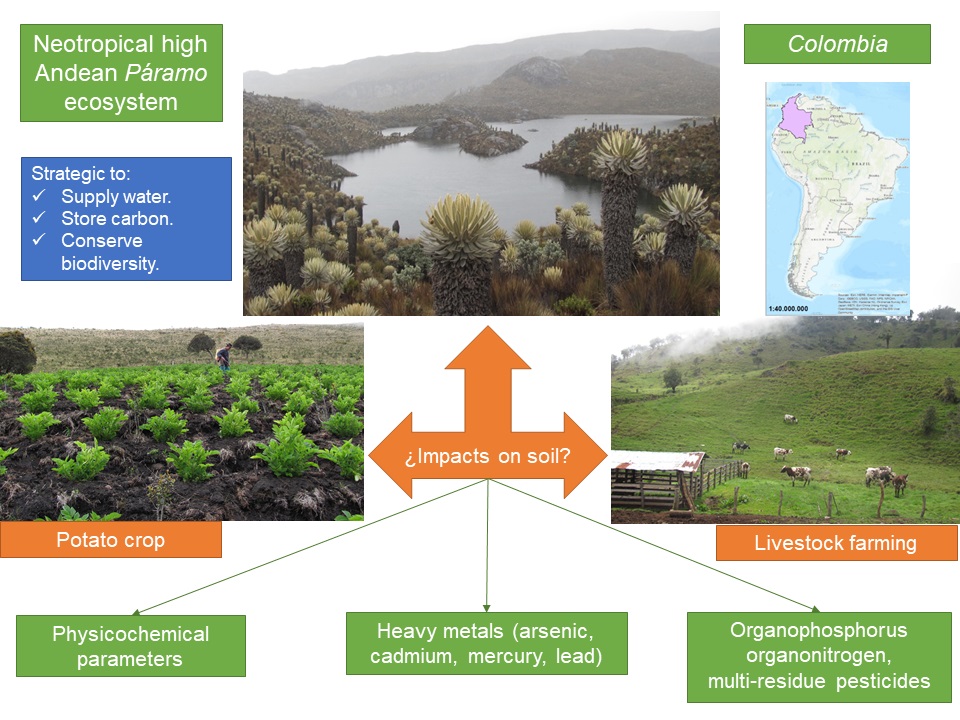Heavy metals and pesticides in soils under different land-use patterns in neotropical high Andean Páramos
25/Apr/2022
ABSTRACT Páramos are unique strategic ecosystems in the neotropical region, above the upper limit of closed forest and below the lower limit of perpetual snow in the tropical mountains of Central and South America. Their soils are of particular importance for water regulation and carbon storage; however, thousands of peasants develop agricultural activities such as potato cultivation and livestock farming in these areas. This research aimed to evaluate the possible heavy metals contents (arsenic, cadmium, mercury, and lead) and pesticide […]
TRACE ELEMENTS IN NATIVE VEGETATION AND INTENSIVE AGRICULTURE AREAS IN MATO GROSSO, BRAZIL, DETERMINED BY TOTAL REFLECTION X-RAY FLUORESCENCE
01/Jul/2015
Total Reflection X-ray Fluorescence (TXRF) is a promising technique for analysis of trace elements (TEs), mainly because samples do not need to be digested, thereby reducing generation of waste and emission of toxic fumes. This study compared the levels of the TEs:Cr, Mn, Ni, Zn, Cu, As, Se, Hg, and Pb in soil samples collected from intensive agricultural and native vegetation areas, as determined by TXRF and by flame or graphite furnace atomic absorption spectrometry (FAAS/GFAAS). In addition, we compared […]
Induction of a geochemical barrier for As, Fe and S immobilization in a sulfide substrate
01/Apr/2012
Acid mine drainage (AMD) is an environmental concern due to the risk of element mobilization, including toxic elements, and inclusion in the food chain. In this study, three cover layers were tested to minimize As, Fe and S mobilization from a substrate from former gold mining, containing pyrite and arsenopyrite. For this purpose, different layers (capillary break, sealant and cover layer) above the substrate and the induction of a geochemical barrier (GB) were used to provide suitable conditions for adsorption […]
Optimization of pre-reduction conditions of as(V) in BCR extracts to quantify arsenic by HG-AAS
01/Aug/2009
The determination of As by hydride generation atomic absorption spectroscopy (HG-AAS) is a simple, sensitive, precise and low-cost method. However, this technique requires the pre-reduction of the existing As(V) species, which is obtained by the use of reducing agents such as KI. In extracts containing oxidizing agents, the pre-reduction of As is impaired, as it occurs in extracts obtained by the BCR (French acronym for Community Bureau of Reference) method for the sequential extraction of As in sediments. The objective […]

